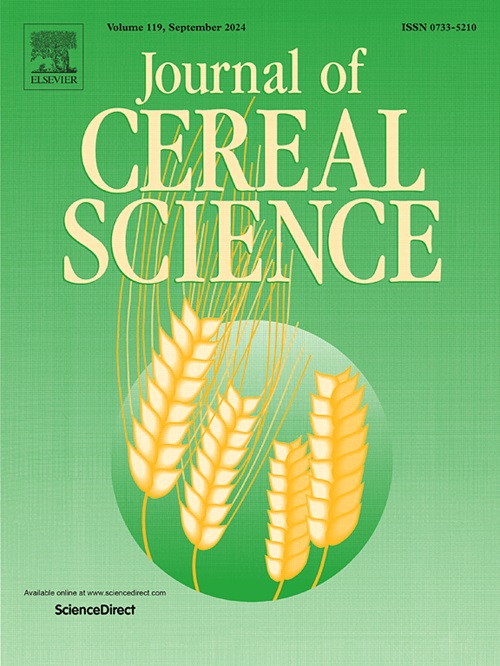Starch digestion enhancement by phytase, protease and xylanase/glucanase in milled maize, wheat and barley grains depends on cereal type and particle size
IF 3.9
2区 农林科学
Q2 FOOD SCIENCE & TECHNOLOGY
引用次数: 0
Abstract
Exogenous enzymes are used in animal feed formulations to enhance starch digestion in milled grains, but the effect of grain type and the underlying mechanisms are incompletely understood. This study compared the effect of three commercial in-feed exogenous enzymes (phytase, protease and xylanase/glucanase) and their combination on starch digestion of milled barley, wheat and maize in an in vitro model. Xylanase/glucanase enhanced starch digestion the most in barley and wheat, while phytase had the largest effect in maize. In each case exogenous enzymes showed greater enhancement of starch digestion for larger grain particles (1.18–2.36 mm). Microscopy showed that xylanase/glucanase treatment reduced cell wall encapsulation of starch for all three grains, suggesting that cell wall encapsulation is not rate-limiting for starch digestion of milled maize. Supplementing phytase in milled maize suppressed the loss of pancreatic amylase activity during small intestinal digestion in vitro. This provides a possible mechanism for the observed enhancement of starch digestion by phytase in grains. The data shows how the effects of enzyme treatment on starch digestion depends on the milled grain source and particle size, and that both de-encapsulation and protection of amylase activity can result in enhanced starch digestion.

植酸酶、蛋白酶和木聚糖酶/葡聚糖酶对玉米、小麦和大麦谷物淀粉消化的促进作用取决于谷物类型和粒度
外源酶被用于动物饲料配方中,以促进淀粉在精加工谷物中的消化,但颗粒类型的影响和潜在的机制尚不完全清楚。本研究通过体外模型比较了3种市售饲料外源酶(植酸酶、蛋白酶和木聚糖酶/葡聚糖酶)及其组合对碾磨大麦、小麦和玉米淀粉消化的影响。木聚糖酶/葡聚糖酶对大麦和小麦淀粉消化的促进作用最大,植酸酶对玉米淀粉消化的促进作用最大。在每种情况下,外源酶对较大颗粒(1.18-2.36 mm)的淀粉消化都有较大的促进作用。显微镜观察显示,木聚糖酶/葡聚糖酶处理降低了淀粉的细胞壁包封,这表明细胞壁包封对淀粉消化没有限制作用。在玉米粉中添加植酸酶可抑制体外小肠消化过程中胰淀粉酶活性的丧失。这为观察到的谷物中植酸酶促进淀粉消化提供了可能的机制。数据表明,酶处理对淀粉消化的影响取决于磨粒来源和粒度,脱包和保护淀粉酶活性都可以提高淀粉消化。
本文章由计算机程序翻译,如有差异,请以英文原文为准。
求助全文
约1分钟内获得全文
求助全文
来源期刊

Journal of Cereal Science
工程技术-食品科技
CiteScore
7.80
自引率
2.60%
发文量
163
审稿时长
38 days
期刊介绍:
The Journal of Cereal Science was established in 1983 to provide an International forum for the publication of original research papers of high standing covering all aspects of cereal science related to the functional and nutritional quality of cereal grains (true cereals - members of the Poaceae family and starchy pseudocereals - members of the Amaranthaceae, Chenopodiaceae and Polygonaceae families) and their products, in relation to the cereals used. The journal also publishes concise and critical review articles appraising the status and future directions of specific areas of cereal science and short communications that present news of important advances in research. The journal aims at topicality and at providing comprehensive coverage of progress in the field.
 求助内容:
求助内容: 应助结果提醒方式:
应助结果提醒方式:


